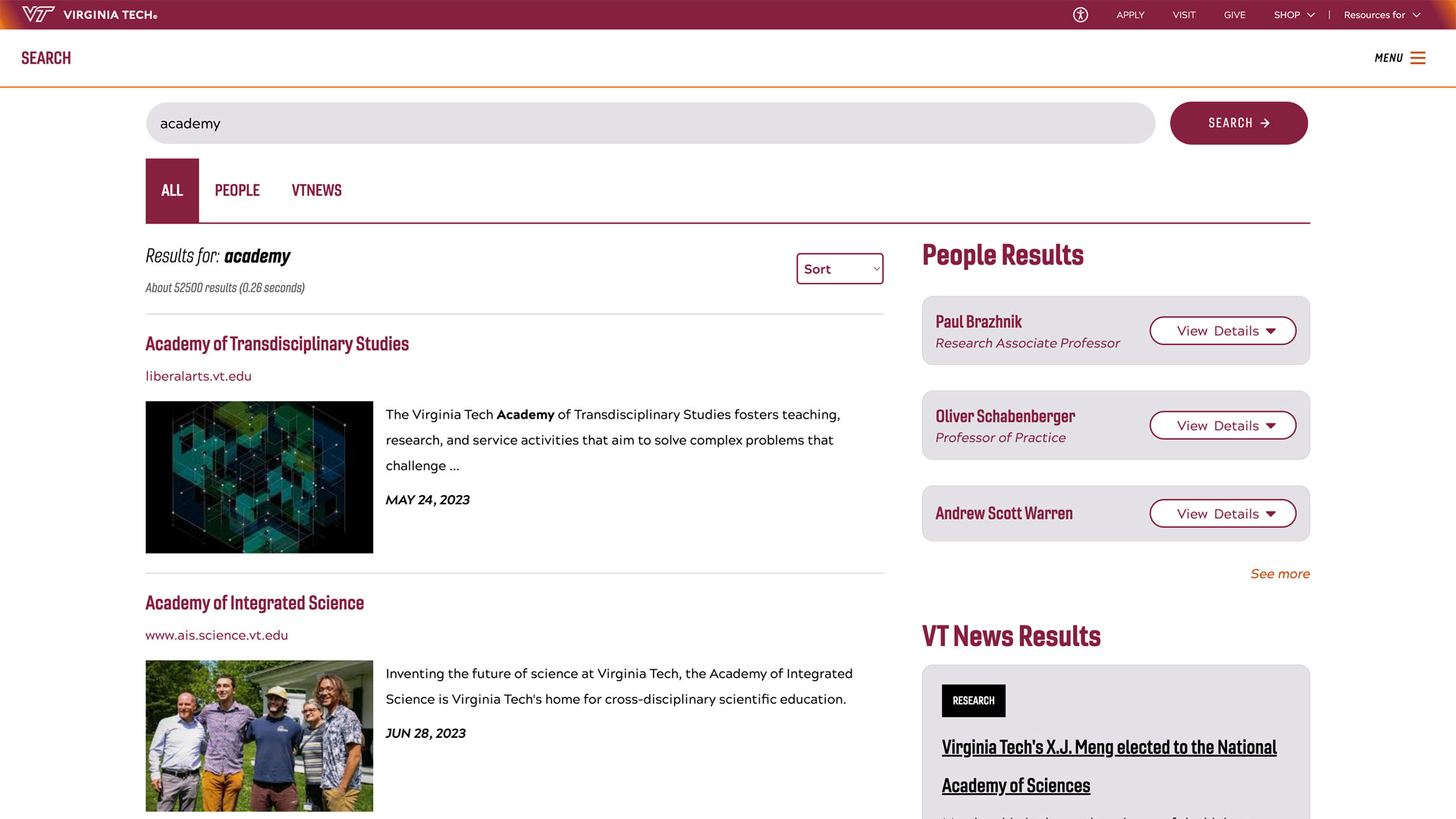When architecture listens
Blending architecture, neuroscience, generative artificial intelligence, and technology, Assistant Professor Alaa Algargoosh reimagines how acoustic spaces can support sustainability and well-being.

When Alaa Algargoosh visited the Mapparium in Boston – a three-story glass globe built in the 1930s – she encountered something unexpected.
A whisper from one side of the room could be heard clearly on the other, while someone standing in the center heard nothing at all. The strange acoustic illusion left a lasting impression.
“It made me realize how powerful sound can be when it’s intentionally designed into space,” she said.
Now an assistant professor in Virginia Tech’s College of Architecture, Arts, and Design, Algargoosh explores how sound affects our minds and bodies. Her research blends architecture, technology, and neuroscience to support emotional health, attention, and well-being through the built environment.
“Acoustics is more than just an afterthought in architecture,” she said. “It directly affects how people feel and function inside a space.”
Her passion for sound design began early in her career as a project manager overseeing renovations in hospital patient rooms. She quickly discovered a significant design gap: sustainable materials that effectively controlled sound were scarce, even in spaces meant for healing.
This realization led her to pursue a master’s degree in sustainable architecture, where she developed cymatic acoustic diffusers – modular wall panels that respond to and visualize sound vibrations. Her innovative work and dissertation at the University of Michigan ("Aural Architecture as Affect: Understanding the Impact of Acoustic Environments on Human Experience") earned her recognition from MIT Technology Review as one of its Innovators Under 35.
As a senior member of the National Academy of Inventors, Algargoosh is building on that foundation in the School of Architecture through her research program and teaching.

Assistant Professor Alaa Algargoosh sets up the sophisticated microphone that she uses to measure the sound signature or impulse response of a room (at top). The second photo below shows the speaker that generates sound. Research collaborator and architecture graduate student Megan Wysocki (at front, third photo below) hopes that her research on the impact of acoustics on an individual’s ability to regain focus could shape architectural design parameters. Photos by Evan Musgrave for Virginia Tech.
Teaching the next generation to design for sound
This spring, Algargoosh led a design studio where students tackled sound-aware architectural challenges. In a recent project, her class reimagined the architecture of a theater, integrating acoustic principles into every phase of the design.
Next year, she hopes to launch a new course focused entirely on acoustic experience. Through hands-on experimentation, students would explore spatial sound analysis, immersive environments, and the emotional impact of acoustics.
One of her signature research initiatives is Sound (e)Scape, a project that creates interactive acoustic environments to help people reduce stress and restore focus. Drawing on attention restoration theory – a concept rooted in how natural environments can restore mental focus – Algargoosh applies the same principles to sound.
“We’re trying to create engaging but not overstimulating environments,” she said. “We want to provide the kind of calm people often find outdoors using sound alone.”
In a workshop at the Massachusetts Institute of Technology museum, participants engaged with resonant soundscapes inspired by ancient caves and domed cathedrals. The goal: to help them lose track of time, space, and even self-awareness – three key elements linked to mindfulness and meditation.
Another research project, Sonic Sculpting, in collaboration with Chris Thomas, assistant professor in the Department of Computer Science, uses artificial intelligence to generate architectural forms that meet specific acoustic criteria. Rather than retrofitting spaces after they’re designed, the approach flips the model: buildings are shaped around sound from the start.
“We train generative models on thousands of 3D forms and acoustic recordings,” Algargoosh said. “The system can then generate building designs that meet precise sound performance goals.”

As part of her acoustics research program, Assistant Professor Alaa Algargoosh (at left, top photo) is tapping the expertise of Chemistry Professor Robert Moore (at center) and graduate student Kira Baugh to develop aerogels as an alternative to traditional acoustic absorptive materials. Photos by Evan Musgrave for Virginia Tech.
Advancing acoustics through materials and multidisciplinary research
She’s also advancing materials science as part of her acoustic research program. Algargoosh is studyingthe use of aerogels, lightweight, porous materials with strong thermal and sound absorption properties. This work is a collaborative venture with Robert Moore, professor in the Department of Chemistry; Zhenhua Tian, assistant professor in the Department of Mechanical Engineering; and their students.
Her goal is to offer sustainable alternatives to traditional acoustic treatments – and in doing so, address a growing public health concern.
“The World Health Organization ranks environmental noise as one of the top threats to global health,” she said. “We need solutions that are not just technical, but human centered.”
Whether using virtual reality, biosensors, or machine learning, Algargoosh’s work reflects a consistent vision: Architecture should actively support how we think, feel, and heal.
“We design buildings for safety, aesthetics, and energy – but we rarely think about how they sound,” she said. “My work is about changing that.”
Her impact is already reaching the broader field of architectural acoustics. Algargoosh has authored several influential studies, including an invited paper for the 2024 InterNoise Conference in France: “Psychoacoustic and Affective Response Analysis of Soundscapes.”
She also recently published a study in The Journal of the Acoustical Society of America linking the unique sonic properties of worship spaces to their emotional effects. In a 2022 study published in Applied Acoustics, Algargoosh and collaborators introduced a novel method for analyzing room modal response using auralization, an approach that simulates how sound behaves in a space to better inform acoustic design.
Algargoosh holds two patents and is an active Acoustical Society of America member. Her academic journey – spanning architecture, affective computing, and sustainable design – continues to expand how buildings are understood and created.
As her work expands at Virginia Tech through leading the Advanced Acoustic Design Lab, Algargoosh is helping to redefine what architecture can be: not just a visual or structural experience, but a multisensory one, with sound as a key ingredient in health and quality of life.
“Understanding acoustics isn’t just about solving a technical problem,” she said. “It’s about creating spaces that help people feel better, focus more clearly, and live more fully.”
Related stories

Once the aerogel, a lightweight, porous material with strong thermal and sound absorption properties, is processed in the lab, it is tested using the impedance tube to measure the acoustic properties of developed material (sound absorption and transmission loss). Members of the research team in the fourth photo below are, from left to right, graduate student Luyu Bo, Assistant Professor Zhenhua Tian, Assistant Professor Alaa Algargoosh, and graduate students Kira Baugh and Jiali Li. Photos by Evan Musgrave for Virginia Tech.
















